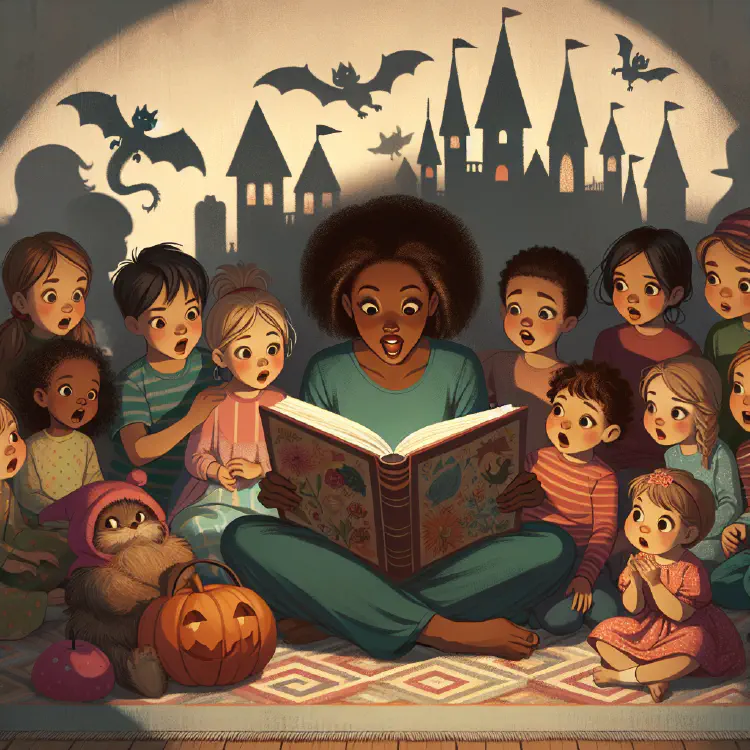Helping Kids Overcome Nighttime Fears Through Storytelling
Bedtime stories can help children overcome nighttime fears by creating comfort, distracting from anxieties, modeling coping strategies, encouraging imagination, and establishing consistent routines.
- 4 min read

As parents, we all know the struggle of getting our little ones to sleep peacefully through the night. Bedtime can be a challenging time for many children, especially those who experience nighttime fears. Whether it’s monsters under the bed, shadows on the wall, or simply the fear of being alone in the dark, these anxieties can make bedtime a stressful experience for both children and parents. However, there’s a powerful tool at our disposal that can help ease these fears and create a positive bedtime routine: storytelling.
In this blog post, we’ll explore how bedtime stories can be used to help children overcome their nighttime fears, and provide practical tips and techniques for incorporating storytelling into your nightly routine. We’ll also share some ideas for creating your own bedtime stories tailored to your child’s specific fears and interests.
The Power of Bedtime Stories
Bedtime stories have been a cherished tradition for generations, and for good reason. These tales do more than just entertain; they serve as a powerful tool for child development, emotional regulation, and bonding between parent and child. When it comes to addressing nighttime fears, bedtime stories can be particularly effective for several reasons:
Creating a sense of safety and comfort: The act of reading or telling a story creates a cozy, intimate atmosphere that can help children feel safe and secure.
Distraction from fears: Engaging stories can redirect a child’s attention away from their anxieties and towards more positive thoughts.
Modeling coping strategies: Through characters and storylines, bedtime stories can demonstrate ways to overcome fears and face challenges.
Encouraging imagination: By stimulating a child’s imagination, stories can help them reframe scary situations in a more positive light.
Establishing a consistent routine: A regular storytelling routine can signal to the child’s brain that it’s time to wind down and prepare for sleep.
Choosing the Right Bedtime Stories
When selecting bedtime stories to help address your child’s nighttime fears, consider the following factors:
Age-appropriate content: Choose stories that are suitable for your child’s age and comprehension level. Bedtime stories for toddlers will differ from those for preschoolers or older children.
Positive themes: Look for stories with themes of bravery, problem-solving, and overcoming challenges.
Relatable characters: Select stories featuring characters your child can identify with or admire.
Gentle humor: Light-hearted stories can help diffuse tension and make bedtime more enjoyable.
Soothing language: Opt for stories with calming, rhythmic language that can help lull your child to sleep.
Some popular types of bedtime stories that can be particularly helpful for addressing nighttime fears include:
Five-minute bedtime stories: These short, concise tales are perfect for younger children or when time is limited.
Goodnight stories: Stories that focus on saying goodnight to various objects or characters can create a sense of closure and readiness for sleep.
Sleep stories: These are specially designed narratives that use calming language and imagery to help children relax and drift off to sleep.
Bedtime short stories: Brief tales that can be easily memorized and retold, allowing for flexibility in storytelling.
Creating Your Own Bedtime Stories
While there are countless published bedtime stories available, creating your own can be a powerful way to address your child’s specific fears and interests. Here are some tips for crafting personalized bedtime stories:
Use your child as the main character: Make your child the hero of the story, facing and overcoming their fears.
Incorporate familiar elements: Include details from your child’s daily life, such as favorite toys or activities, to make the story more relatable.
Address specific fears: If your child is afraid of the dark, create a story about a character who discovers the beauty and magic of nighttime.
Use positive language: Focus on courage, problem-solving, and the idea that fears can be overcome.
Keep it simple: Aim for a clear, easy-to-follow plot that your child can understand and remember.
End on a positive note: Conclude the story with a happy, reassuring ending that leaves your child feeling safe and content.
Techniques for Effective Storytelling
The way you tell a story can be just as important as the story itself. Here are some techniques to enhance your storytelling and make bedtime stories more engaging an
